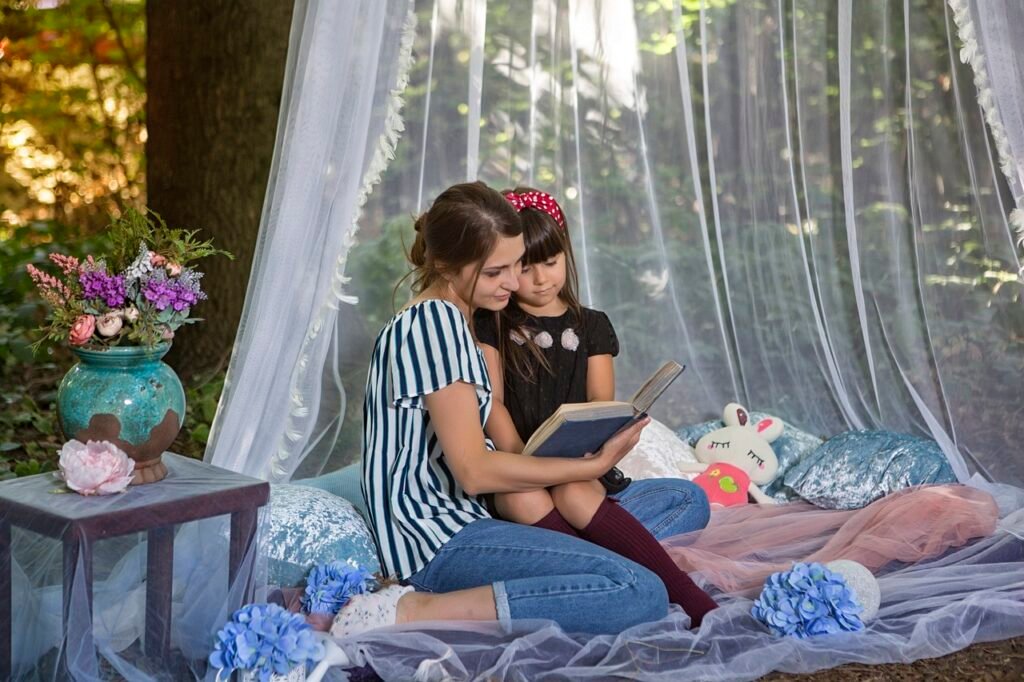
This post may contain affiliate links. As an affiliate, we earn from qualifying purchases. But we only recommend products we would use ourselves. View our Disclosure Policy here.
Children are natural explorers and imaginative thinkers, and providing them with a dedicated outdoor space can be a magical gift. Transforming your patio into a haven for play, creativity, and quiet reflection not only enhances your child’s well-being but also fosters a deeper connection with nature. In this guide, we’ll explore how to create a children’s quiet nook, a captivating play set, an elaborate sandbox area, and a fantastic fort, each designed to engage young minds and bodies in different ways.
Building a Children’s Quiet Nook
Choosing the Right Location:
Begin by selecting a cozy corner on your patio that receives a mix of sunlight and shade. This ensures a comfortable environment for reading, drawing, or quiet contemplation. Consider proximity to nature elements like plants or a small garden, as they can enhance the serene atmosphere.
Creating a Comfy Foundation:
Lay down a soft, weather-resistant rug or a few outdoor cushions to provide a comfortable sitting area. This creates a cozy space for children to unwind with a good book or engage in imaginative play. Your kids will love sharing this space with mom and dad and their favorite play dates. Quiet spaces provide a calm space after a long day of learning at school.
Adding Decorative Touches:
Enhance the nook with colorful, child-friendly decorations. Hanging fairy lights, paper lanterns, colorful throw pillows, or outdoor bunting can add a touch of whimsy. Consider incorporating a small table for art projects and decorate it with non-toxic paints for creative expression.
Including Storage Solutions:
Integrate storage bins or shelves to keep books, art supplies, and toys organized. This not only helps maintain a tidy space but also encourages children to take responsibility for their belongings.
Integrating Natural Elements:
Embrace nature by incorporating potted plants, small rocks, or even a bird feeder or a cute bird bath nearby. Children can observe birds and insects, fostering a sense of connection with the natural world.
Making it Personal:
Allow your child to contribute to the nook’s design by choosing a few decorations or creating personalized artwork. This involvement instills a sense of ownership and pride in their special outdoor retreat.
Constructing a Play Set
Safety First:
Before diving into the construction of a play set, prioritize safety. Ensure that the materials used are child-friendly and weather-resistant. Regularly inspect and maintain the play set to address any wear and tear promptly.
Designing the Play Set:
Whether you opt for a pre-made set or decide to build one from scratch, consider age-appropriate features. Swings, slides, climbing structures, and a small platform can provide a variety of activities for children of different ages.
Creating a Soft Landing:
Install a shock-absorbing material under the play set to cushion potential falls. Materials like rubber mulch or artificial grass with padding provide a safe and comfortable surface.
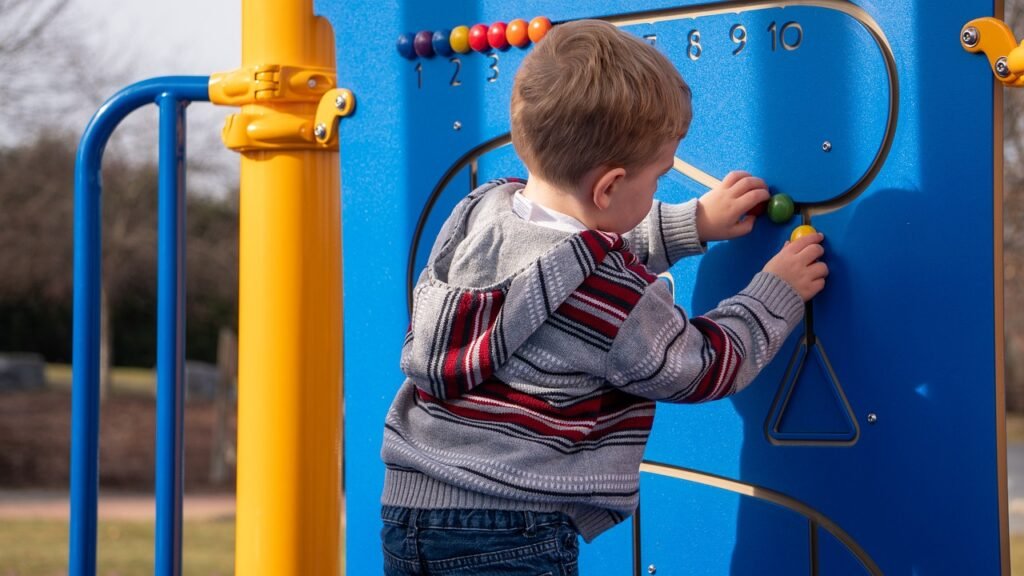
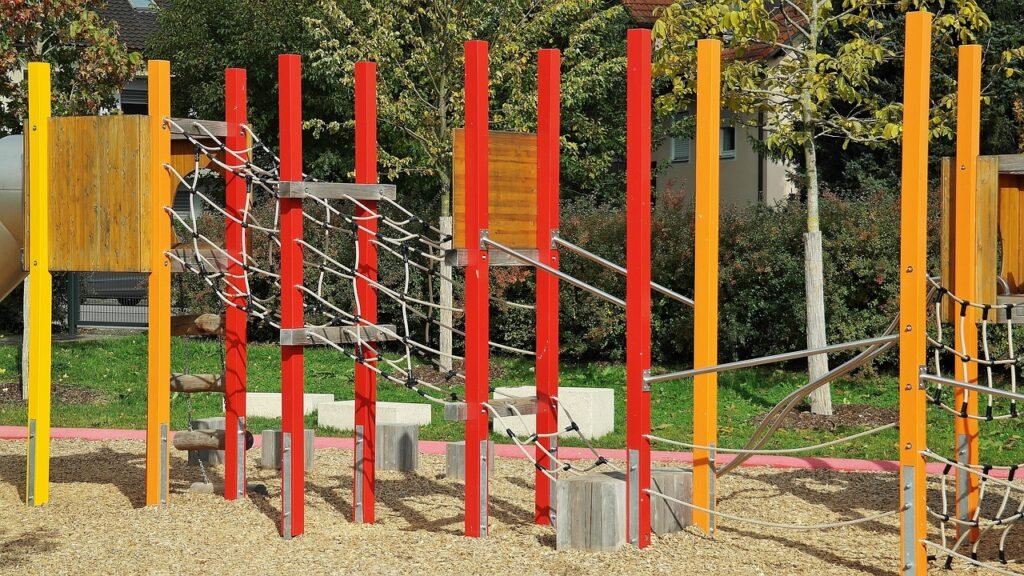
Adding Educational Elements:
Infuse the play set with educational components, such as a mini chalkboard for drawing or attaching a simple abacus for counting. These subtle additions can turn playtime into a learning experience.
Incorporating Themes:
Enhance the play set’s appeal by incorporating themes that resonate with your child’s interests. Whether it’s a pirate ship, castle, or jungle, themed play sets spark creativity and imaginative play.
Shade and Seating:
Integrate a small canopy or umbrella to provide shade during hot days. Include a bench or a comfy canopy covered seating area nearby for parents to supervise or join in the fun. Or a hanging wicker chair for the grown-ups to read a book while the kids play.
Crafting an Elaborate Sandbox Area
Selecting the Right Spot:
Identify a flat and shaded area for the sandbox. Consider a location close to the children’s quiet nook or play set for a seamless play experience.
Choosing Sandbox Materials:
Opt for high-quality, non-toxic sandbox sand. Ensure it’s free of debris and allergens. Consider covering the sandbox when not in use to prevent contamination from leaves, animals, or rain.
Adding Creative Tools:
Integrate a variety of sandbox toys such as shovels, buckets, molds, and even miniature construction vehicles. These tools encourage imaginative play and fine motor skill development.

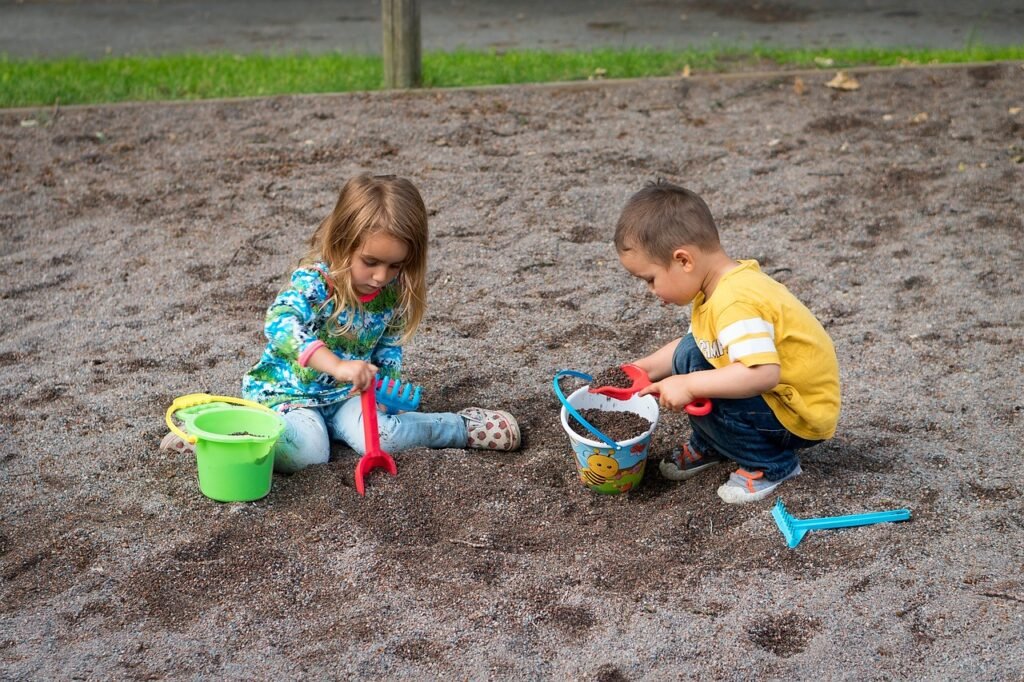
Building a Cover:
Design a cover for the sandbox to protect it from the elements and keep animals out. A hinged lid or a fitted tarp with weights at the corners makes for an easy and effective solution.
Themed Sandbox Ideas:
Elevate the sandbox experience by incorporating themes. Turn it into a beach with seashells and miniature umbrellas or a construction site with toy trucks and building blocks.
Comfortable Seating:
Surround the sandbox with kid-sized seating. Consider incorporating benches or logs for parents or caregivers to sit while supervising, creating a cozy gathering spot.
Constructing a Fantastic Fort
Selecting the Ideal Spot:
Choose a secluded yet accessible area for the fort. It could be nestled among trees or near the play set, providing an additional layer of adventure to the play space.
Gathering Materials:
Collect sturdy materials such as PVC pipes, wooden pallets, or recycled materials to build the fort’s frame. Ensure that the materials are weather-resistant and safe for children.
Designing the Structure:
Let your child’s imagination run wild when designing the fort. Whether it’s a castle, spaceship, or secret hideout, involve them in the planning process to make it a collaborative and exciting venture.
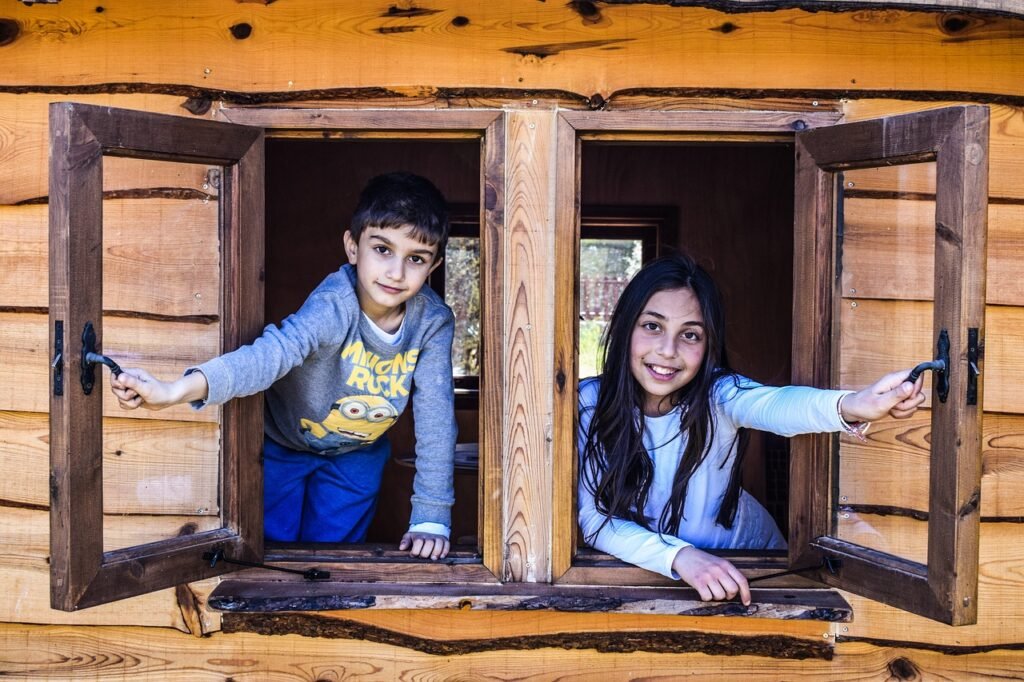
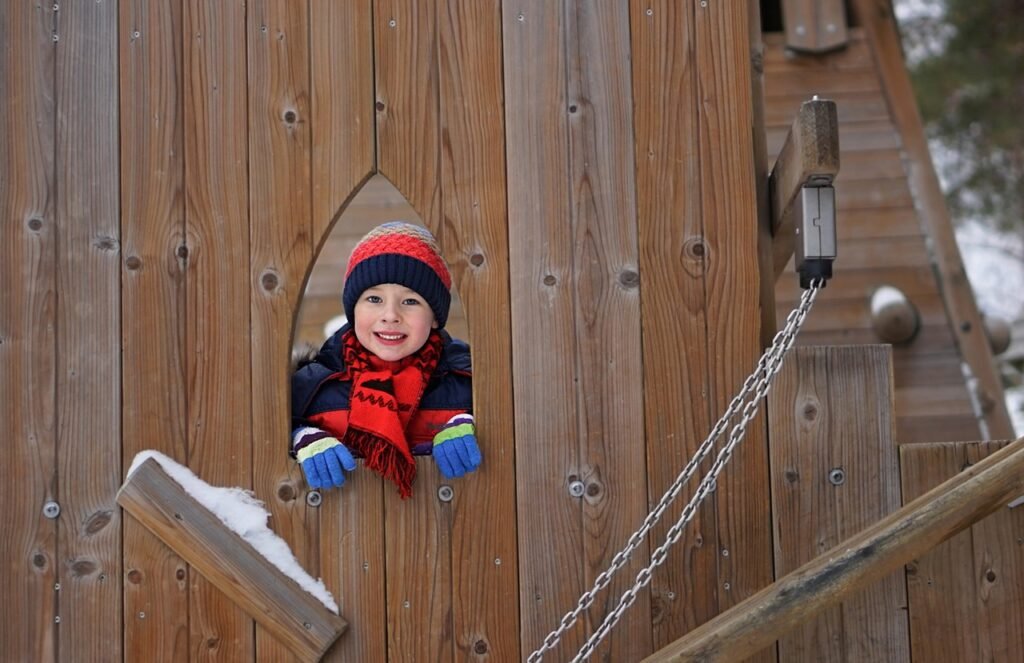
Adding Fabrics and Covers:
Drape weather-resistant fabrics or tarps over the frame to create walls and a roof. Consider using bright, colorful fabrics to make the fort visually appealing. Ensure that the coverings are easy to secure and remove.
Including Cozy Elements:
Place soft cushions, blankets, or even a decorative outdoor rug inside the fort to create a comfortable and inviting space. This adds a cozy touch, turning the fort into a retreat for storytelling or quiet play.
Personalizing with Decorations:
Allow your child to personalize the fort with their artwork or decorations. This could include hanging artwork, string lights, or even a small flag. Personalization fosters a sense of pride and ownership.
Maintenance and Safety Tips
Regular Inspections:
Periodically inspect all outdoor play areas for signs of wear, damage, or hazards. This includes checking for loose bolts, splinters, or any other potential safety concerns.
Weather Protection:
Invest in weather-resistant materials for all outdoor structures and cover them during inclement weather. Provide a storage bin to protect toys. This helps prolong the life of the play elements and ensures a safer play environment.
Educational Opportunities:
Integrate educational elements into each play area, turning playtime into valuable learning experiences. This could include a small chalkboard for drawing, oversized tumble structure, themed educational games, or the classic ladder toss.

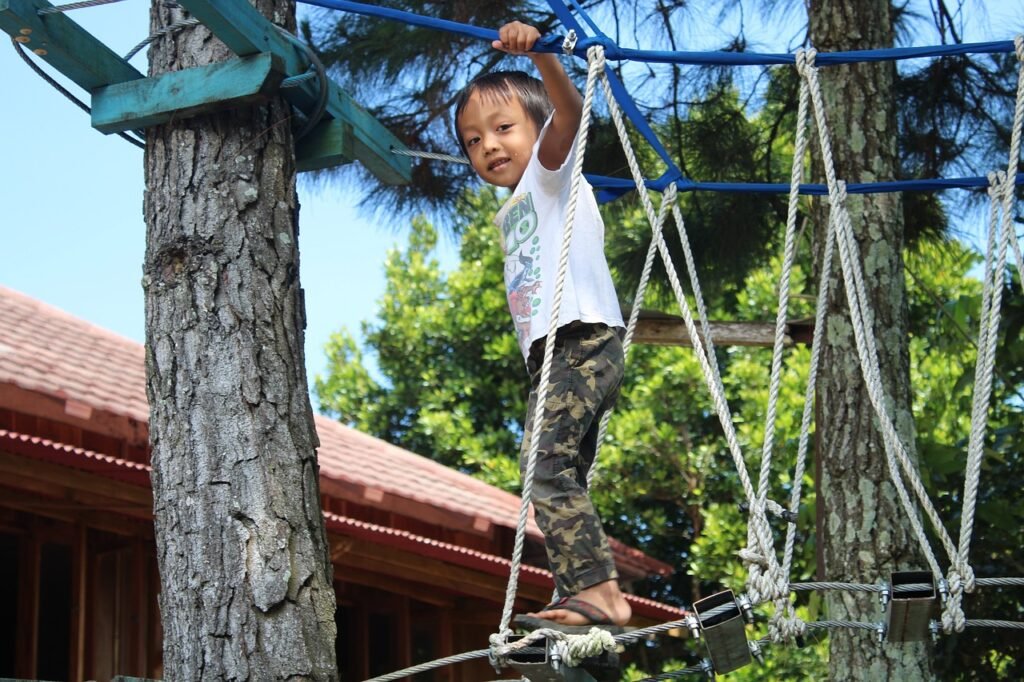
Supervision and Boundaries:
Establish clear boundaries for play areas and always supervise young children during playtime. Educate them about safe play practices and set guidelines to ensure a secure and enjoyable experience.
Encouraging Imagination:
Foster creativity by encouraging imaginative play in each designated area. Whether it’s pretending to be pirates in the fort or creating intricate sandcastles, imaginative play contributes to cognitive development.
Seasonal Adjustments:
Adapt play areas to the seasons. Consider adding a fun family pool near the play area during the summer or incorporating wind chimes, bird feeders, and bird baths during the spring. Seasonal adjustments keep the play spaces engaging throughout the year.
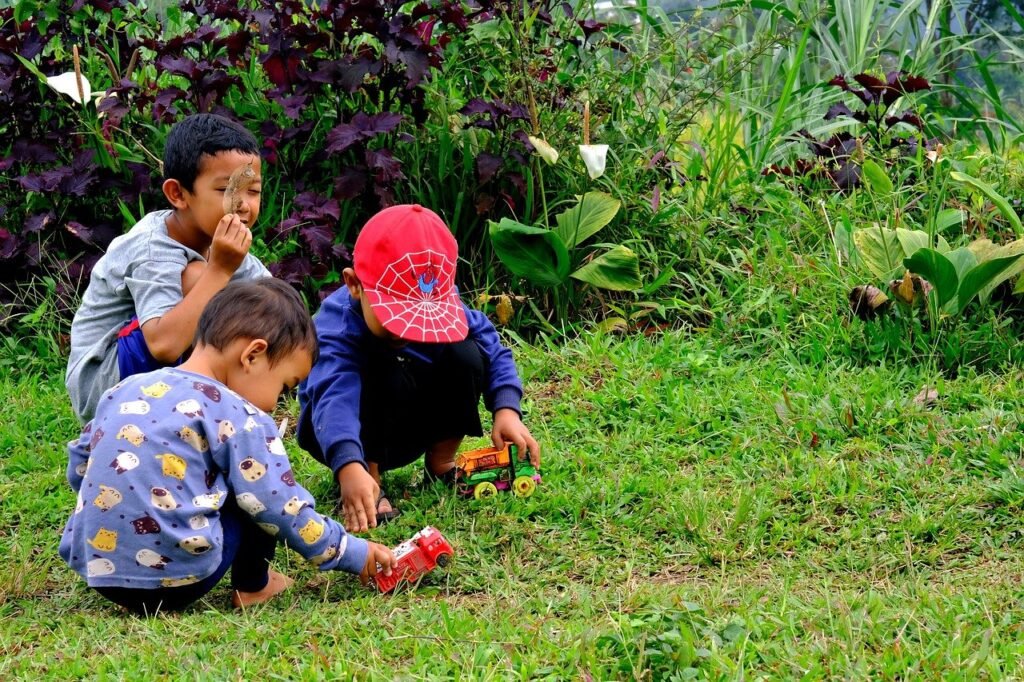
Transforming your patio into a captivating play space for children involves careful planning, creativity, and a touch of magic. By creating a children’s quiet nook, a play set, an elaborate sandbox area, and a fort, you provide a diverse range of experiences that cater to different aspects of a child’s development. From quiet reflection to active play and imaginative exploration, these outdoor spaces become the backdrop for countless childhood memories. With safety as a priority and a commitment to fostering creativity, you can create an enchanting haven that sparks joy and wonder in the hearts of the little ones in your life.



